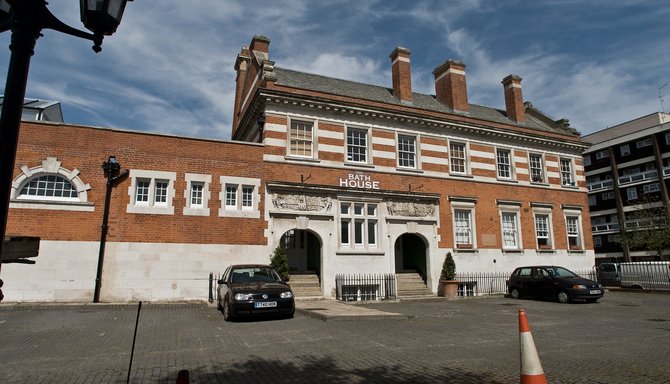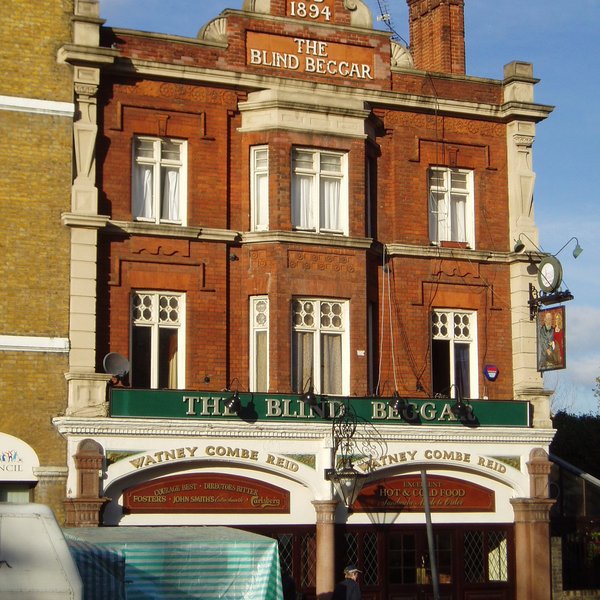
The Origins Of Bethnal Green
The area was first settled some time prior to 1275, records showing that there were grazing pastures and at least one house at this time. It didn't really develop until the 17th century however, when French protestants, persecuted by the catholic crown, fled to England, many of them settling in London's East End.
Silk Weavers In Bethnal Green
Many of these French refugees were weavers proficient in producing lustings, velvets, brocades, satins and silks. This was a hard to come by skill in England at the time and they found they were able to make good business plying their trade. They handed their skills on to the locals of Bethnal Green, Spitalfields and the surrounding area and soon London's East End became a thriving textiles hub.
One thing in particular that contributed to their success was a ban on the importation of French silks. Many found ways around this prohibition of course but it still created a demand for fabrics of local origin.

The Bethnal Green Riots
This demand took a hit in the 1700s however when Indian calicoes became trendy amongst London's elite. Out of work weavers took to the streets, sometimes attacking women found dressed in these foreign imports. On June 13th, 1719, a full-blown riot broke out, weavers breaking into shops and warehouses to search out and destroy the fabrics that had deprived them of their livelihoods.
Protests continued throughout the century, a crowd of 5,000 weavers armed with bludgeons and pickaxes gathering outside a cabinet minister's house in 1765 and again rioting when their demands were not met. It wasn't just importation they were angry about either, a lack of wage regulation had resulted in many of them being underpaid by their master-weavers. They wanted the government to step in to ensure they got what they were owed.

The End Of Silk In Bethnal Green
Towards the end of the century, the government did this in the form of three acts. These were supposed to sure up fairness between master and worker but in reality they ground the industry to a halt. They were later repealed but by then it was already the beginning of the end for London's weavers.
The Napoleonic War saw a brief reprise in the popularity of English silk and between 1801-31 the population of Bethnal Green trebled. This was no good thing however. A great deal of these new residents were reliant on the fabric industry and when, in 1824, restrictions against the importation of French silk were relaxed, many of them found themselves out of work. This trend continued through the century until, in 1860, a treaty that allowed French silk to be imported duty-free dealt a death blow to the East End's fabric industry.

Bad Times In Bethnal Green
What had before been an area of hope and prosperity was soon reduced to a slum. Families were crammed together in large tumbledown houses full of disused looms. By the end of the century Bethnal Green had become one of the poorest neighbourhoods in London. And with poverty came crime.
In 1888 Jack the Ripper stalked the deprived streets of the East End, slitting throats, removing organs and taunting the police with maniacal handwritten letters, sometimes accompanied by the aforementioned organs.

Bethnal Green In The 20th Century
In 1900, an early council estate opened in the area to provide housing for those unable to afford it. Despite this, the area remained overcrowded and low on opportunities. There was little work available beyond that which could be found in its exploitative Victorian workshops.
During WW2 it was a target area of the blitz. The local library was hit on the very first night of bombing and had to subsequently be moved into the unfinished tube station. Eighty tons of bombs fell on Bethnal Green in total, destroying 2,233 houses and killing 555 people.
After the war working class life began gradually to improve. A 1957 report showed that infant death rates were falling, whilst birth rates and local prosperity were on the rise. What was also on the rise however was organised crime.
The Kray Twins and their gang, The Firm, lived and operated in the area in the 1950s and 60s. A nightclub was the legitimate face of their business, but much of their wealth was from protection rackets and armed robberies.
Recent decades have seen a decline in crime accompanied by the gradual gentrification of Bethnal Green, alongside the rest of Central London.

Interested in finding more places like this? Try one of our Treasure Hunts in London - untangle cryptic clues as a team, as you are taken on a journey to the most unique, unusual and bizarre corners of London.













